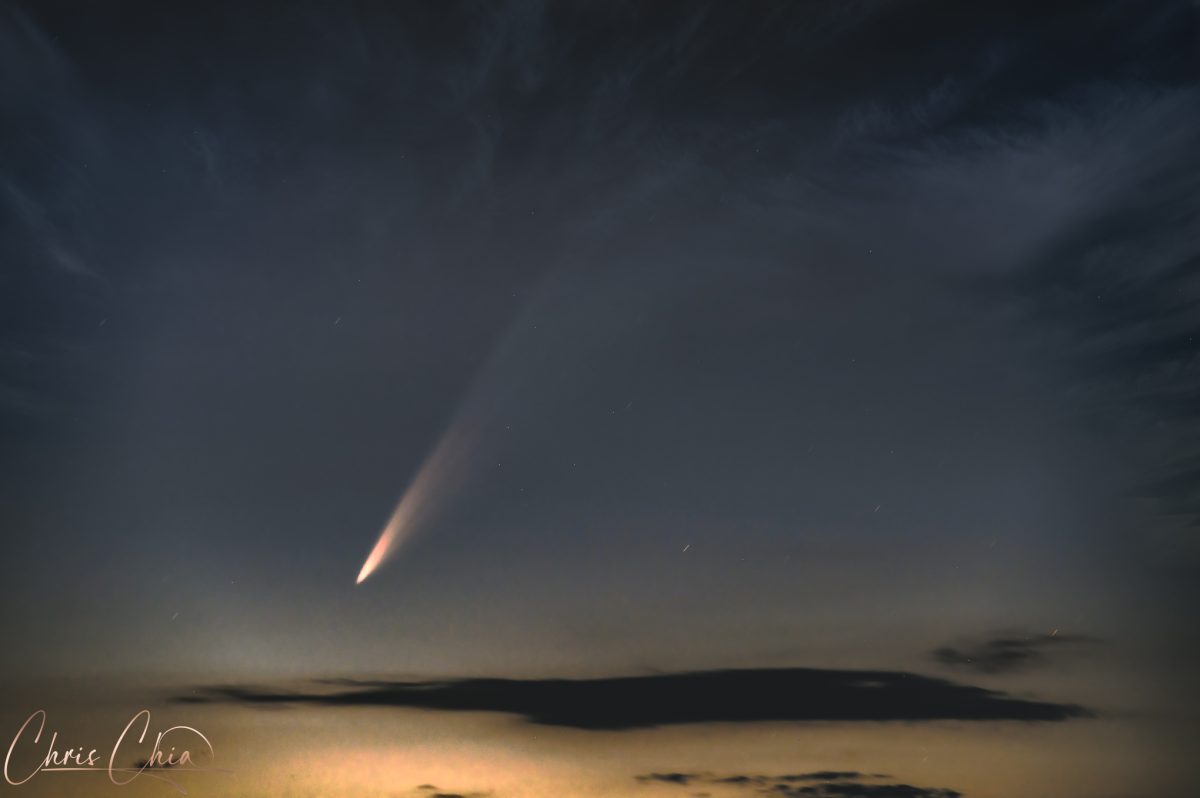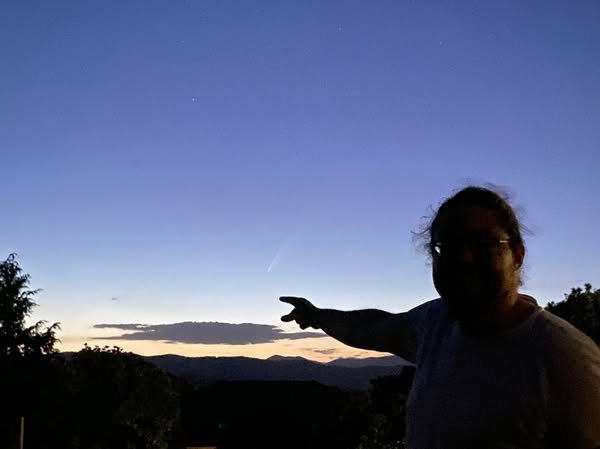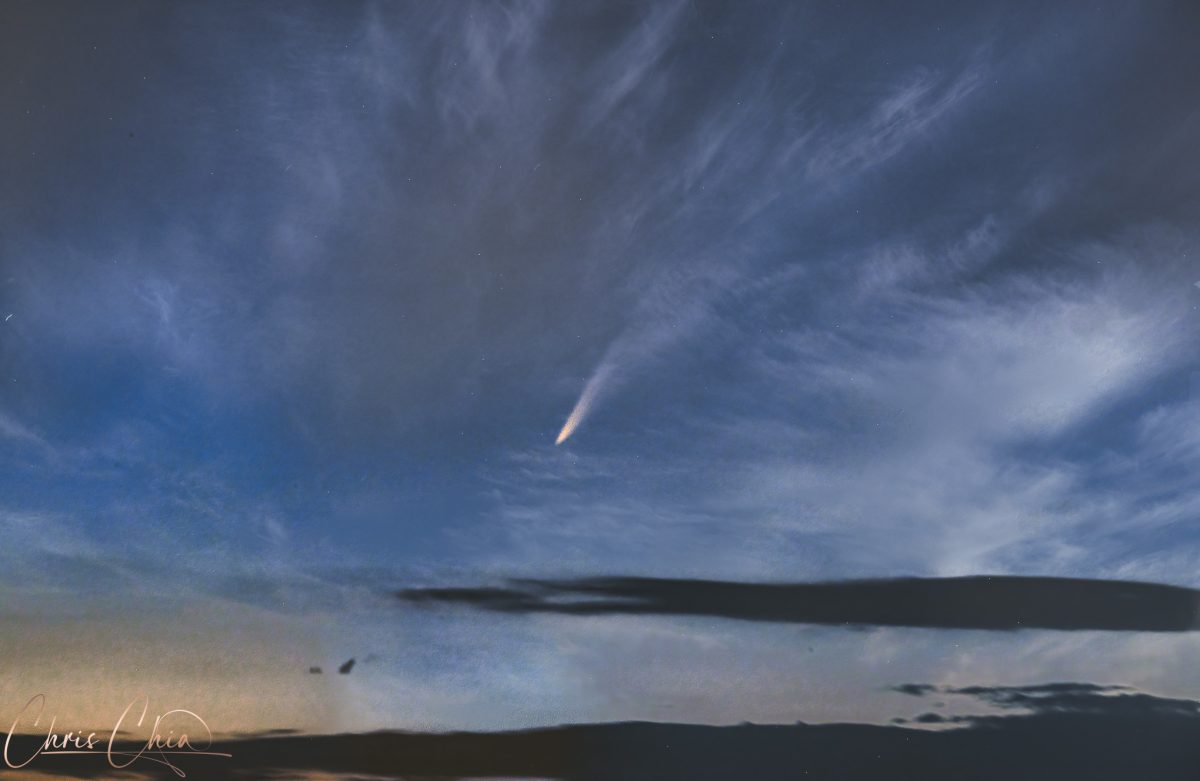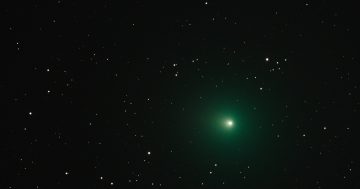
The C/2024 G3 comet, as seen from Mount Ainslie on Tuesday, 21 January. Photo: Chris Chia.
Hordes of Canberrans scaled to the top of Mount Ainslie last night (21 January) to watch the fading glory of a comet that won’t return to this side of the solar system for hundreds of thousands of years. But you still have a few more days to catch a glimpse.
The comet, known as C/2024 G3, was discovered by NASA’s Asteroid Terrestrial-impact Last Alert System (ATLAS) in April 2024 when it was still 655 million km from Earth.
It got within 140 million km on 14 January, but as it heads off again into the void of space, the southern hemisphere is best placed to see it.
Australian National University astrophysicist Dr Brad Tucker described it as the “brightest comet of the year”.
“So about five to 10 minutes after sunset, look towards the west where the sun just set, and it should be hanging out low in the sky,” he said in a video.
“Right now, it’s about the same brightness as Venus, which is pretty high in that western sky. Now it won’t look like a star; it looks like a fuzzy blob with the tail coming off of it.”

C/2024 G3 is visible with the naked eye. Photo: Dr Brad Tucker.
Dr Tucker managed to capture the comet using his iPhone camera on the evening of Tuesday, 21 January, but says “time is running out”.
“It had a beautiful tail,” he said.
“It is getting fainter but was still definitely visible to the naked eye – no binoculars or telescope required. There are still likely a few days to see it yourself.”
He doesn’t expect it to return for another 100,000 to 200,000 years, although NASA has calculated it may even be longer than that – up to 600,000 years.

C/2024 G3 comet, as seen from Mount Ainslie on Tuesday, 21 January. Photo: Chris Chia.
It seems hundreds of Canberrans were spurred on by the news, with the top of Mount Ainslie near the city “packed” on Tuesday night, according to local photographer Chris Chia.
“Cars all along the way,” he told Region, but added the journey certainly didn’t disappoint.
“Soon after sunset, the comet was visible after 9:15 pm and was playing a game of hide and seek in between two bands of clouds. It was my first comet ‘chasing’ of the year and I’m so glad I managed a few shots.”
Mr Chia previously captured the Aurora Australis on New Year’s Day from a rural property near Burra, which he describes as “a good omen”.
On board the International Space Station (ISS), astronaut Donald Pettit also got a photo of the comet on 11 January.
“It is totally amazing to see a comet from orbit,” he reportedly said.
According to TheSkyLive.com, the C/2024 G3 comet is currently in the constellation of Pisces Austrinus, around 172 million km from Earth.













